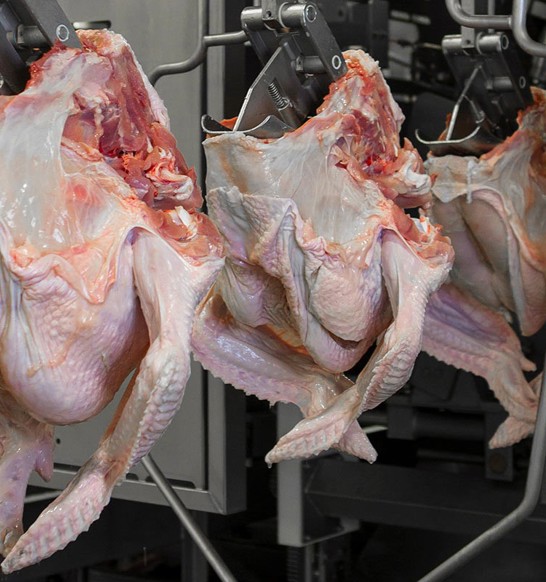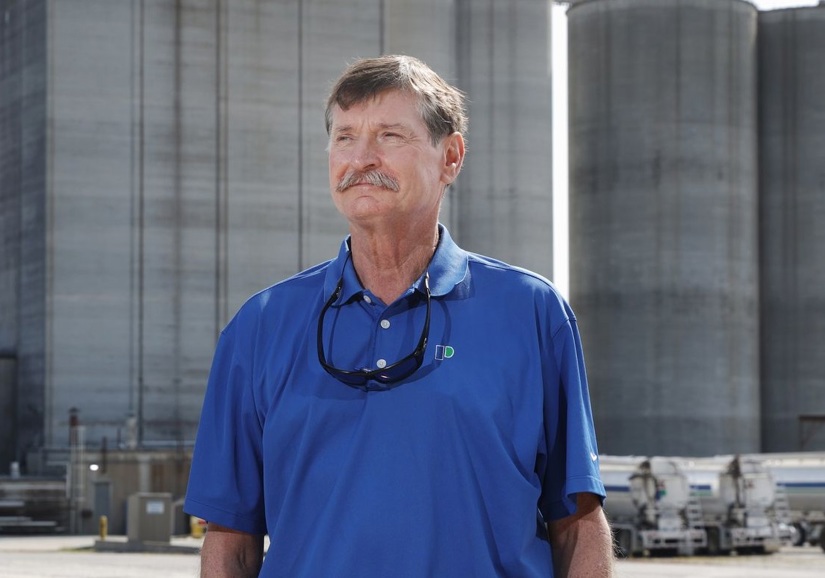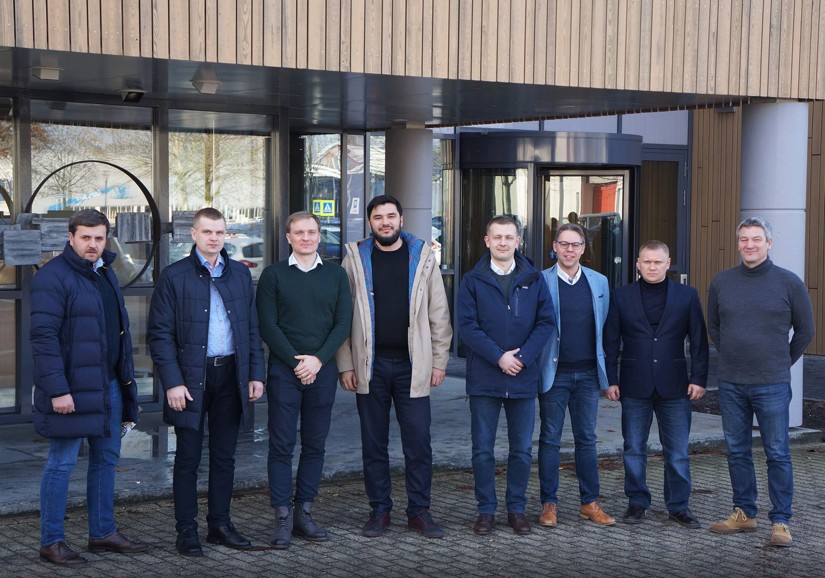Information
Marel's ability to fillet turkey front halves automatically is unique in turkey processing. The technically advanced, modular FHF-XT solution gives users maximum turkey meat yield. The system will handle both male and female turkeys. Changeover between males and females is quick and easy.
Flexibility in turkey filleting
By integrating a well-thought-out choice of modules into the filleting line, the FHF-XT system can excellently process turkey front halves. This results in various products such as whole wings or segmented wings cut in three parts, shoulder meat with or without skin, fillet with or without tenderloin attached.
FHF-XT offers clear benefits; its modular construction allows great layout flexibility of the filleting process, which can lead to a vast variety of end products. The large diversity in filleting methods enables an adequate, tailor-made response to customer demands.
High-quality end products
Product carriers with front halves are transported, suspended from the system’s overhead conveyor, through various processing modules and past semi-automated or manual work stations where different deboning operations are carried out.
For consistently top-quality end products, an FHF-XT installation can be complemented by a StreamLine system. The Marel turkey deboning solutions give high quality end products, ensuring the highest standards of hygiene and food safety.
Deboned turkey meat can be scanned using SensorX advanced x-ray technology. SensorX detects the exact location of bone and any other contaminants, allowing meat to be trimmed effectively and adding extra value to your product.
- Large layout flexibility of the filleting process
- Maximum turkey meat yield
- Product carrier positions product ideally at each module
- Modules can be added or bypassed
- Cleaning of product carrier before every cycle
- High levels of hygiene and food safety
- Finest end-product quality
- Follows the speed of the cut-up system for toms and hens
- Easy changeover between males and females
- Manual operations can be minimized
- Remaining manual operations are easy, low need for personnel training


